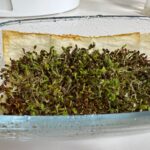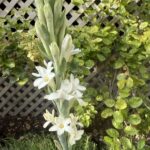As gardeners in a climate that are really harsh for about at least a third of the year, we are all on the lookout for plants that will be able to take the full summer sun and flourish. Today I give you Tamarisk Pink aka Salt Cedar. It is a pretty plant but I would put it in the same category as the Damas. Like Damas, it likes to have all the resources to itself and discourages and actively goes about getting rid of competitors. It is highly salt-tolerant and can grow in saline areas. It extracts the salt from the after and this salt is then concentrated in the soil near it and on the leaves. Animals cannot eat the leaves and the soil close to the plant becomes unusable for others. However, it is pretty, so plant it in a planter and confine it to an area and you will be fine as it does well in the heat.
It originates from this region and is found all over Eurasia. It is highly salt-tolerant and drought tolerant as its taproot can go down deep for water. In many parts of the United States, it is considered invasive as it has managed to outlive the native species because it is better able to survive drought. The story of our discovery of this plant is like this. A dear friend and I were on a mission to find reliable sources of different kinds of animal manure. So off we went hunting for a farm in Awir shared by an Emirati friend. When we got there, we did not find any manure but found a budding nursery with many interesting plants. This was one of them. We also found some local herbs and the trip was well worth it. I had never seen that part of Dubai and quite enjoyed the drive. In the desert, the wild variety blooms with white flowers but we found the ones from the Mediterranean which flowers in pink.

It is propagated easily from cuttings and seeds and does well as a hedge. The leaves are slender, Juniper-like, grey-green in color and the flowers are very slender on a stalk. they can either be white or pink. The Tamarisk is propagated from semi-hardwood cuttings at the end of winter so it would be around February here, which means I missed the window. It grows well in most soils but dislikes shallow chalky soil. Make sure it is protected from cold winds as it gets really affected by that and starts to turn limp and dry. Mine suffered this winter but I kept it in full sun and it has bounced back beautifully. It requires a little fertilizing occasionally, and do prune out the deadwood regularly.






Recent Comments